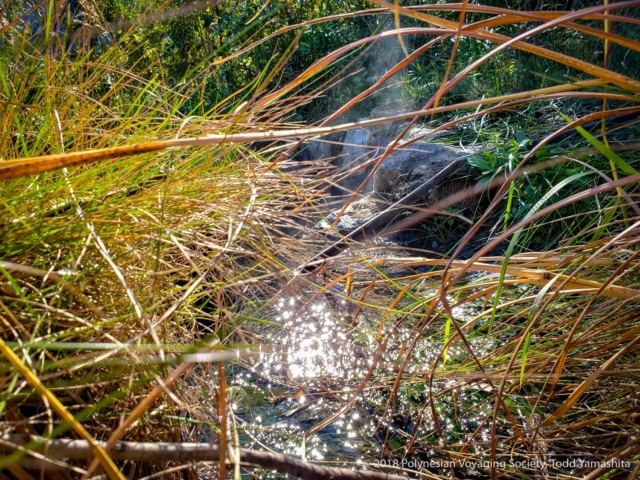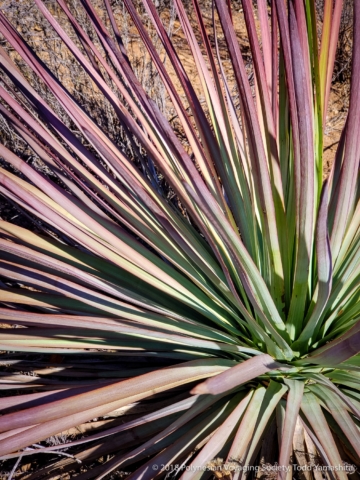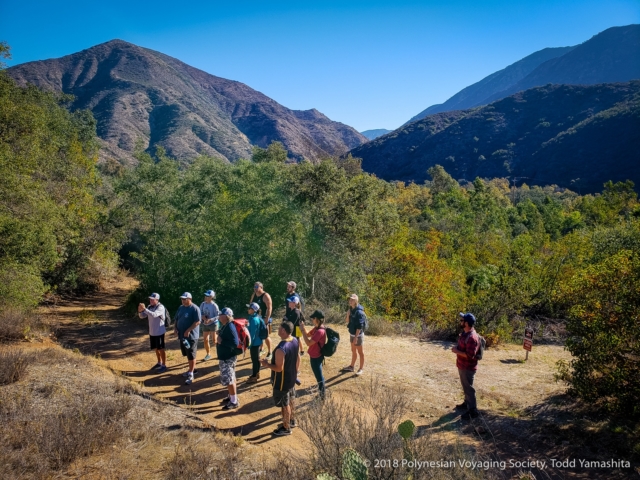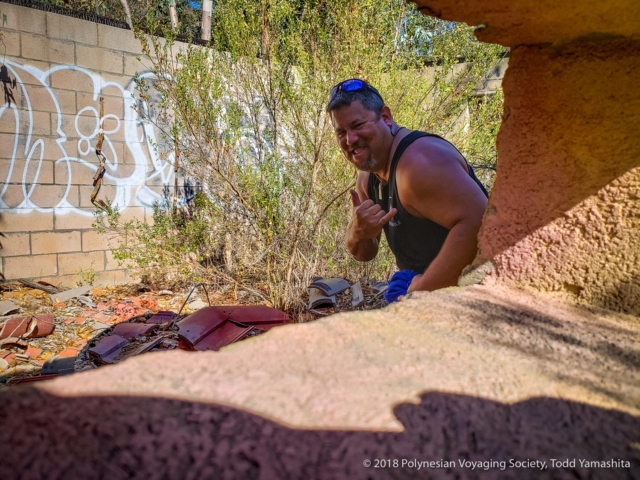
Crew Blog | Andrea Buckman: San Juan Capistrano Hot Springs
- Posted on 3 Nov 2018
- In Hikianalia Updates, Malama Honua Selects, Newsletter, Photo Galleries, Stories of Place, Teachers
 Crew blog by Andrea Buckman
Crew blog by Andrea Buckman
As we piled into trucks early one morning, our crew was excited to break away from the coast to explore new territory in the mountains of Southern California. Our destination is Caspers Wilderness Park, an 8,000 acre protected wilderness preserve nestled among the river terraces and sandstone canyons of the western Santa Ana Mountains.

Hikianalia crewmembers gather around the original sign for the hot springs when they were open to the public.
As we approached the dirt road, we were surprised to hear from our guides that in addition to an educational hike, we were being taken to the San Juan Capistrano Hot Springs. Although there have been numerous attempts to develop the area over the years, as evidenced by various ruins and relics, the area is still vastly open, natural and certainly beautiful.
We were in awe as the steam and bubbling water rose from the otherwise dusty, dry, earth. Hot springs, also called thermal springs, bubble to the surface with water at temperatures substantially higher than the air temperature of the surrounding region. Most hot springs discharge groundwater that is heated by shallow intrusions of magma (molten rock) in volcanic areas. In fact, our guides pointed out the remnants of volcanic peaks and magma chambers that had eroded to form the present mountain range surrounding us. We laughed and were relieved that the long, hot hike we were anticipating was turning out to be not as arduous as expected, since we still had a series of events to attend that evening.
Todayʻs trip was relevant for me and the work I do with the Leeward Haleakalā Watershed Restoration Partnership. I was interested to explore how the Ocean Institute at Dana Point‘s education team shares the importance of watershed protection, background on ways indigenous tribes use the local plant life, and how they preserve native flora and fauna. They also discussed their attempts to provide the public access to this unique, well-known site at levels that will not negatively impact the landscape.

The knowledgeable staff from Ocean Institute – Dan, Chris, and Claire – that guided HIkianalia crew during their visit to the San Juan Capistrano hot springs.
We were guided to the site and along the trails by Claire, Chris, and Dan from Ocean Institute. They shared with us historic photos of the site, which provided important background on the trading routes and historical land uses in the area.
The region was also an important place for gathering plants like the yucca, which had a variety of valuable uses. Along the way we looked at game cameras used to capture the occasional mountain lion and more frequent trespassers that come to use the hot springs. The mountain lion populations have been isolated by roads that dissect and constrict their habitat, resulting in in-breeding and low population growth.
We learned how local indigenous tribes once utilized the native species found in the area. We also learned about mounting environmental pressures including wildfires, commercial development, trespassing, the spread of invasive species, and exploitation of special places–all of which are common globally including our home in Hawaiʻi.

Hikianalia crew member Michi Wong and Kapena (Captain) Mark Ellis at the San Juan Capistrano hot springs.
After being graciously hosted by the Ocean Institute for seven days, it is evident that they are taking a leadership role in community and student education, and, in the process, promoting conservation of both the land and sea.
We departed San Diego with much gratitude for their generosity and exemplary education programs. we also left with visions for how we could improve outreach programs and facilities at the Polynesian Voyaging Society. I also feel honored to have been able to not only share our aloha with the community, but also to leave rejuvenated and even more inspired by the aloha given by the staff of the Ocean Institute, the local Hawaiian contingency, and the greater community at Dana Point.




















